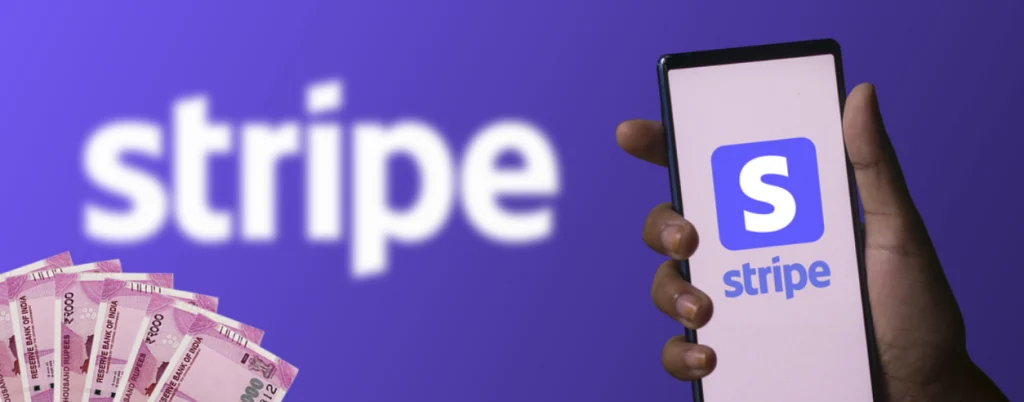If you sell to US clients, what you really care about isn’t just “getting paid”—it’s how much INR lands, how fast, and how clean your compliance trail is. After decades split between export finance, FX desks, and long-form content, here’s the blunt, useful version: Stripe gives you reach and conversion uplift at checkout; SWIFT gives you bank-to-bank formality. Between them lies a maze of fees, FX spreads, payout schedules, chargeback risk, paperwork, and timelines. This MOFU guide maps that terrain—so you can choose the route that compounds margin instead of shaving it.
We’ll cover: how Stripe payment methods affect acceptance and cost, what Stripe’s payout/FX mechanics mean for India-bound funds, where real time payments fit, and when a direct export SWIFT is the saner choice. We’ll close with a brand-forward, concrete path that bakes in faster cash, RBI-grade documentation, and fair FX.
The two routes most Indian service exporters actually use
Route A — Stripe → INR (card/ACH acceptance in the US, settle in INR)
- You accept via Stripe payment gateway (cards, ACH, wallets, and Stripe local payment methods where enabled), then Stripe pays out to your Indian bank in INR on your payout schedule.
- Stripe typically withholds the first payout for 7–14 days (risk hold), then follows your region’s schedule thereafter; India accounts run daily automatic payouts on business days. (Stripe Docs)
Route B — Direct Export SWIFT (client’s bank → your AD bank in India)
- Your US client wires USD over the SWIFT network to your Indian account; your AD bank converts to INR against your purpose code and issues FIRC/e-FIRA later.
- Timing is rarely instant: industry sources peg India at ~3 business days on average, with a broader 2–5 day range depending on cut-offs, correspondents, and checks. (tools.statrys.com)
Core trade-off: Stripe optimizes front-end acceptance and operational ease; SWIFT optimizes conservative optics and buyer policy compliance. Both have FX consequences and settlement lag you must price in.
Stripe, but precise: what affects your landed INR
1) Acceptance mix (what your US buyer actually uses)
Stripe groups payment methods into families—Cards, Bank debits, Bank redirects, Bank transfers, Wallets, Buy-Now-Pay-Later, Vouchers, and Real-time payments—and can display eligible options dynamically. Broader acceptance usually lifts conversion, but each method carries its own pricing and dispute profile. (Stripe Docs)
Why this matters: Every extra 1–2% of authorization lift at checkout can outweigh a few basis points of processing fee—if your FX and payout timing don’t hand it back later.
2) Processing & FX layers (the quiet haircut)
Stripe’s public pricing commonly shows a base processing fee for cards, a surcharge for international cards, and an extra fee when currency conversion is required (often listed as “+2%” on regional pages; exact numbers vary by country/plan). If you present in USD and settle in INR, you should expect a conversion fee on top of processing. Stripe’s docs also discuss the FX Quotes API (to view current rates or obtain a time-bound quote and fee visibility) and materials explaining presentment vs. settlement currency (the spread + conversion fee model). (Stripe)
Practical reading: processing (domestic/international) + currency conversion (+X%) + disputes/chargebacks (if any) = your Stripe cost stack, before India taxes and compliance.
3) Payout cadence (cash-flow math, not marketing)
- Initial hold: Stripe’s standard 7–14 day delay for the first payout is risk policy; you can’t waive it. After that, normal cadence applies. (Stripe Support)
- India schedule: For Indian Stripe accounts, payouts are daily and automatic on business days; weekends/holidays post on the next business day. (Stripe Support)
Implication: If your payroll run is tight, your first Stripe cycle can squeeze working capital. Build that into your runway.
4) Disputes & reserves (the risk tax)
Card-presented flows carry non-zero chargeback risk; platforms may place reserves or extend payout delays in higher-risk verticals. SWIFT wires don’t “charge back,” but can be recalled in rare AML/error cases; their real risk is time + FX opacity.
SWIFT, but honest: what the bank route really costs
- Time: ~3 business days on average to India; often 2–5. Each correspondent hop and time-zone miss adds a day. (tools.statrys.com)
- Fees: Sender fee + intermediary (“lifting”) fees + receiving fee; your net USD can be lower than invoiced.
- FX: If you remit in USD and convert in India, your AD bank’s rate (and timing) governs the INR. “Free wire” can still be costlier than Stripe if the rate is weak.
Upside: Satisfies enterprise policy (“wire only”), no card disputes, and clean chain of funds.
Downside: Slower cash, opaque combined cost, more manual chasing for UTR/FIRC.
“Stripe → INR” vs “Export SWIFT”: a CFO-style comparison
| Dimension | Stripe → INR | Direct Export SWIFT |
| Checkout conversion | High—broad Stripe payment methods & Stripe local payment methods improve acceptance | N/A—off-platform invoice & wire |
| Speed to INR | After first-payout hold, daily business-day payouts; still subject to Stripe’s schedule (Stripe Support) | ~3 business days avg, commonly 2–5 to credit in India (tools.statrys.com) |
| FX transparency | Conversion fee added when settlement ≠ presentment; FX quote tooling exists (Stripe) | Bank converts at its INR rate on value date; rarely pre-quoted |
| Fee structure | Processing + intl card uplift + conversion fee; dispute/chargeback fees possible (Stripe) | Wire fees at each hop; sometimes OUR/SHA confusion; no disputes |
| Risk profile | Card disputes, reserves, rolling risk policies | Low dispute risk; compliance holds possible |
| Ops & docs | Stripe dashboarding; payout statements; FX info via APIs (Stripe Docs) | UTR, FIRC/e-FIRA via AD bank; more email-and-excel effort |
| Who it suits | Productized services, SaaS, agencies needing on-site conversion & scale | Project-based B2B where buyer insists on bank wires |
The landed INR lens (illustrative mechanics)
Illustration only (your pricing may differ). Assume a US client pays $10,000.
Stripe → INR
- Card processing + intl uplift (varies) + currency conversion fee when settling INR (commonly shown as +2% on regional pricing pages) → your net USD-equivalent gets clipped before INR conversion; initial payout might be held 7–14 days then daily schedule. (Stripe)
SWIFT
- Sender pays a wire fee; your net USD might be $10,000 – intermediaries; AD bank converts at bank INR rate on credit day; timing ~2–5 days shifts FX outcome. (Wise)
What actually wins?
- For smaller, card-driven tickets, Stripe’s higher acceptance and instant authorization can outweigh its FX/processing stack.
- For large B2B milestones, SWIFT can win on absolute cost if your bank’s INR rate is tight and the client covers OUR fees—else not. The devil is in FX + time.

Real-world frictions that quietly rewrite your P&L
- Cut-offs (both sides). Miss a US bank or platform cut-off by 10 minutes; add T+1. SWIFT doubly punishes bad timing. (Stripe Support)
- Presentment vs settlement currency. Quote in USD, settle in INR? Expect conversion fees/spread. Consider controlled quoting (Stripe’s FX Quotes API) if you stay on Stripe. (Stripe Docs)
- Method mix. Pushing buyers toward ACH/bank debit inside Stripe can shave card uplift; offering Stripe local payment methods in the US (where applicable) improves acceptance profile. (Stripe Docs)
- Documentation lag. Wires: FIRC/e-FIRA depends on your AD bank’s cycle; Stripe: payouts/statements are fast, but export paperwork still lands with your bank/CA.
- Disputes vs. recalls. Cards have formal chargeback windows; wires don’t—yet AML holds exist. Price that risk.
When to favor each route (decisioning, not dogma)
- Stripe → INR if you sell productized services/subscriptions, need on-site conversion, and value broad Stripe payment methods (cards, wallets, bank debits) that win more checkouts. Expect the first-payout hold, plan cash accordingly. (Stripe Docs)
- Export SWIFT if enterprise policy demands bank wires or your ticket sizes justify negotiating OUR fees + FX certainty with the buyer/AD bank; accept slower value dates. (tools.statrys.com)
- Hybrid if you want Stripe’s conversion upside for small/medium invoices and a SWIFT lane for big milestones with pre-agreed FX/fees.
Playbook: how seasoned Indian exporters engineer better outcomes
- Quote policy: If using Stripe, consider USD presentment but model the conversion fee; if using SWIFT, embed a line on OUR charges and value date in your SOW. (Stripe)
- Acceptance strategy: Turn on the right Stripe local payment methods for US buyers (cards/ACH/wallets) to lift auths without inflating disputes. (Stripe Docs)
- Cash-flow choreography: Budget for Stripe’s 7–14 day first-payout; map payroll to actual payout days (India: daily automatic thereafter on business days). (Stripe Support)
- FX governance: Track realized INR vs mid-market weekly. Stripe side: reconcile the “+conversion” line; SWIFT side: record your AD bank’s spread on each credit.
- Compliance hygiene: Pre-map purpose codes; one invoice → one reference; reconcile UTR → e-FIRA/FIRC → GST monthly, not at year-end.

Conclusion: You shouldn’t have to choose between reach, speed, and fair FX
Stripe payment gateway excels at acceptance: smart routing, rich Stripe payment methods, and (where enabled) real time payments rails. Direct export SWIFT excels at tradition: boardroom comfort, bank letters, slower but sturdy. The craft is to capture Stripe’s conversion lift without leaking INR to conversion fees and delays—and to use SWIFT without surrendering weeks and transparency.
That’s exactly the gap HiWiPay closes for India’s exporters and B2B service businesses. We operationalize the fast lane you wanted all along:
- More INR per payout — Consistently low FX mark-ups vs banks & generic processors, with no hidden forex margins. You see the rate; you keep the value.
- Speed as a habit — Receive in ~24 hours (T+1) on most corridors, with real-time status that removes the guesswork. (If you’re coming from Stripe’s first-payout hold or SWIFT’s T+3, you’ll feel the difference immediately.)
- Compliance in the first mile — RBI-aligned flows with smart export-document suggestions (purpose codes, e-FIRC/e-BRC). Your export trail matches your bank’s reality—no month-end scrambles.
- Collect globally, settle locally — Global virtual accounts so US clients pay “like locals,” then we settle to your Indian current account—a clean alternative to juggling multiple Stripe local payment methods and SWIFT follow-ups.
- Books that close themselves — Payment-to-invoice matching and real-time tracking so finance can forecast cash, not chase it.
- Operate without the branch — A secure mobile app, one-to-one support, and workflows designed for SMEs that ship code, content, and services across time zones.
- Built by a payments veteran — Led by Dewan Neralla (Atom Technologies, NTT DATA Payments) so you get enterprise-grade rails with exporter-grade pragmatism.
Keep Stripe where it shines—front-end conversion and Stripe payment methods when the funnel needs it. Keep SWIFT when the enterprise insists. For everything else—landed INR, T+1 certainty, and export-clean documentation—run it on HiWiPay. That’s how modern Indian firms turn US invoices into dependable rupees—fast, fair, and audit-ready.



